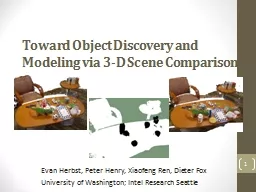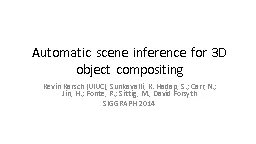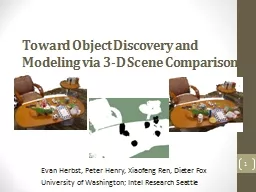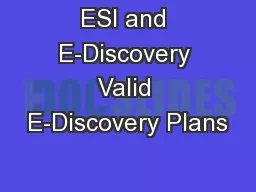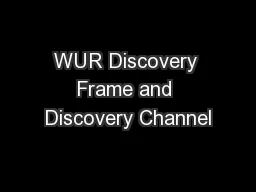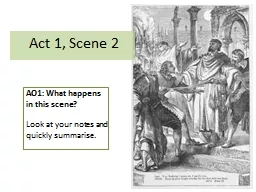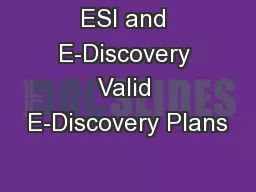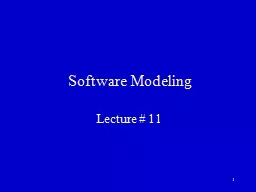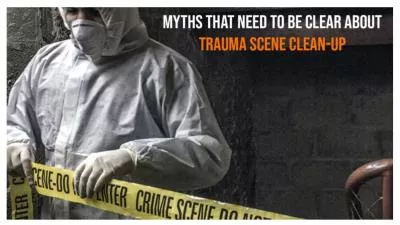PPT-Toward Object Discovery and Modeling via 3-D Scene Comparis
Author : karlyn-bohler | Published Date : 2016-03-21
Evan Herbst Peter Henry Xiaofeng Ren Dieter Fox University of Washington Intel Research Seattle 1 Overview Goal learn about an environment by tracking changes
Presentation Embed Code
Download Presentation
Download Presentation The PPT/PDF document "Toward Object Discovery and Modeling via..." is the property of its rightful owner. Permission is granted to download and print the materials on this website for personal, non-commercial use only, and to display it on your personal computer provided you do not modify the materials and that you retain all copyright notices contained in the materials. By downloading content from our website, you accept the terms of this agreement.
Toward Object Discovery and Modeling via 3-D Scene Comparis: Transcript
Download Rules Of Document
"Toward Object Discovery and Modeling via 3-D Scene Comparis"The content belongs to its owner. You may download and print it for personal use, without modification, and keep all copyright notices. By downloading, you agree to these terms.
Related Documents

